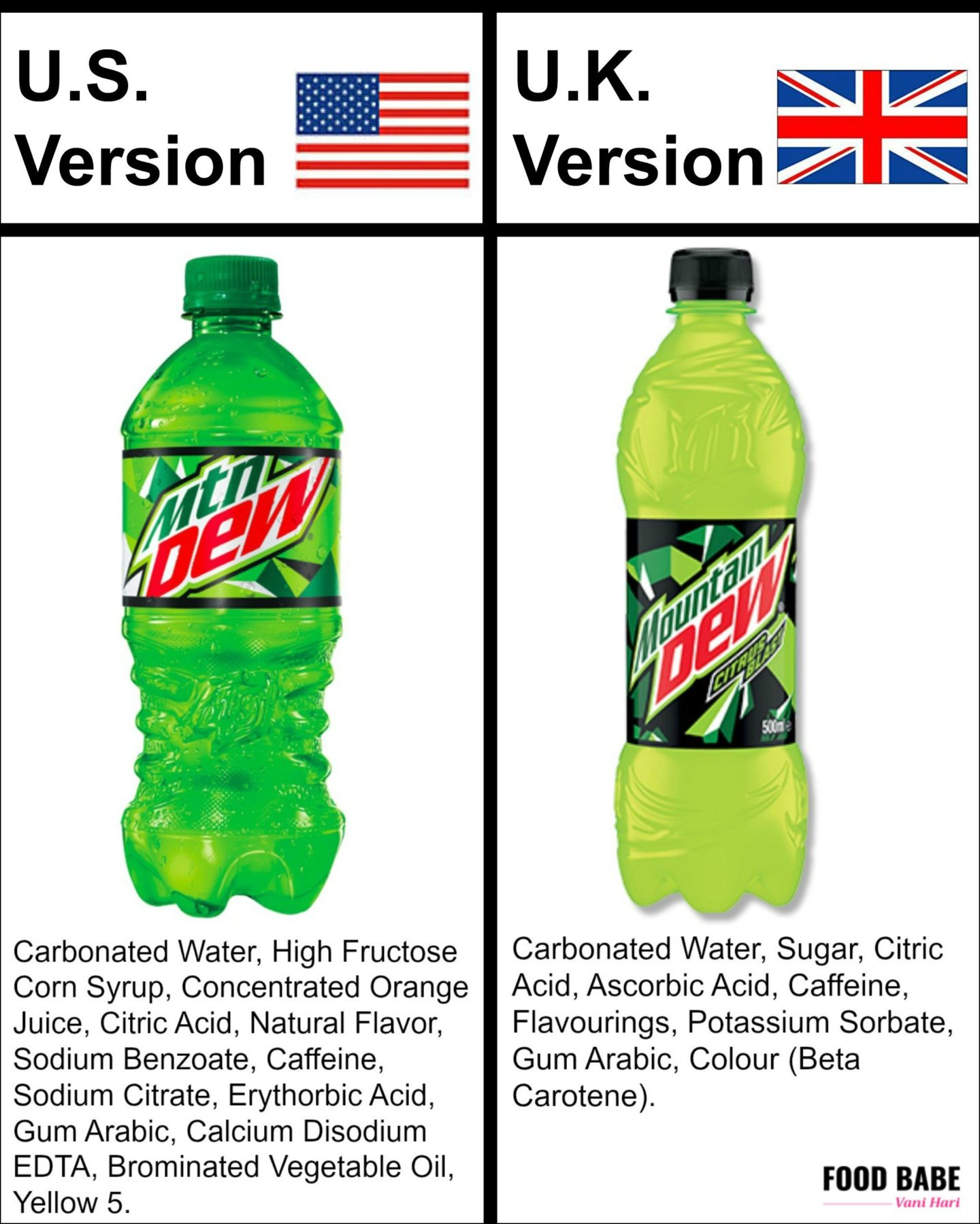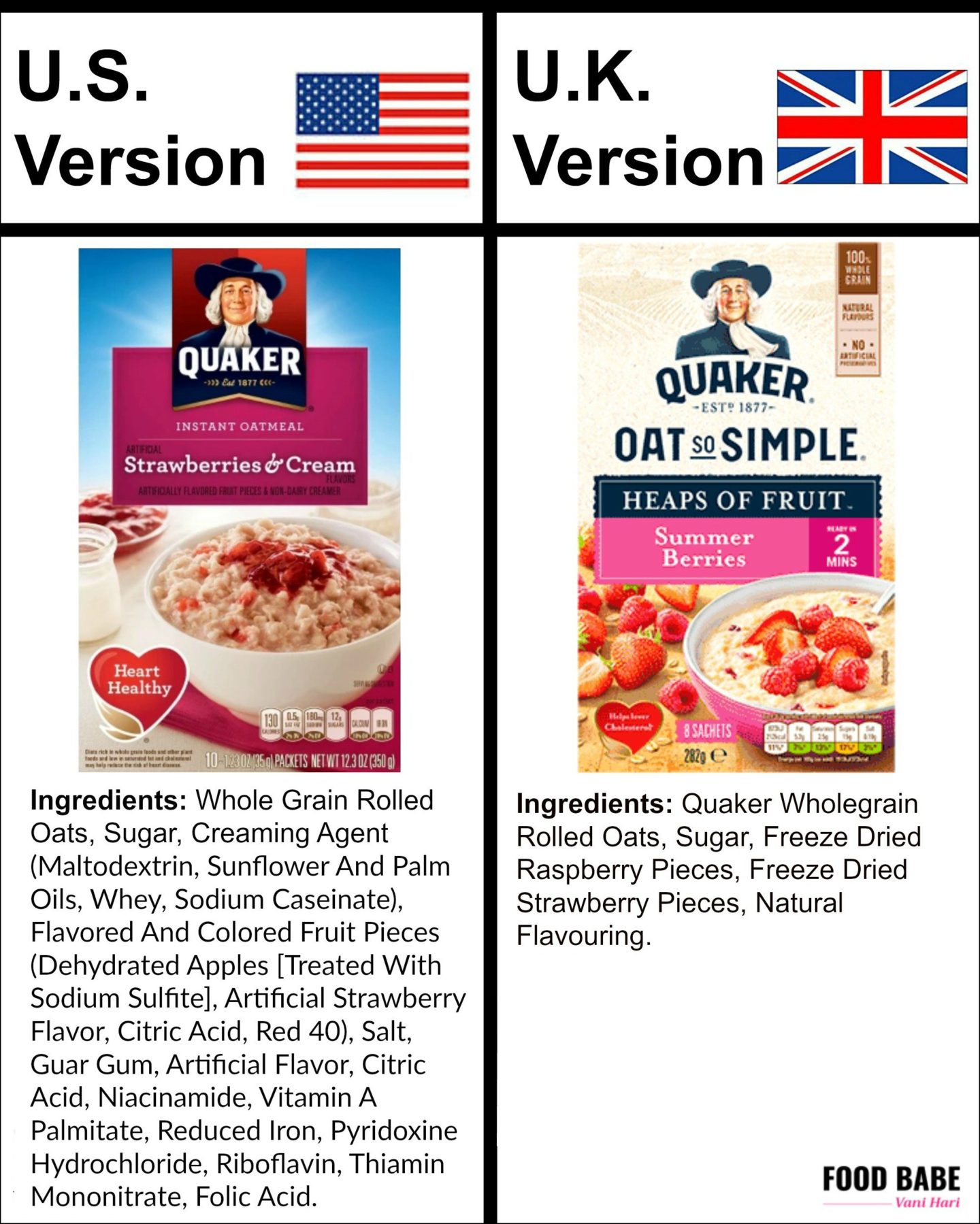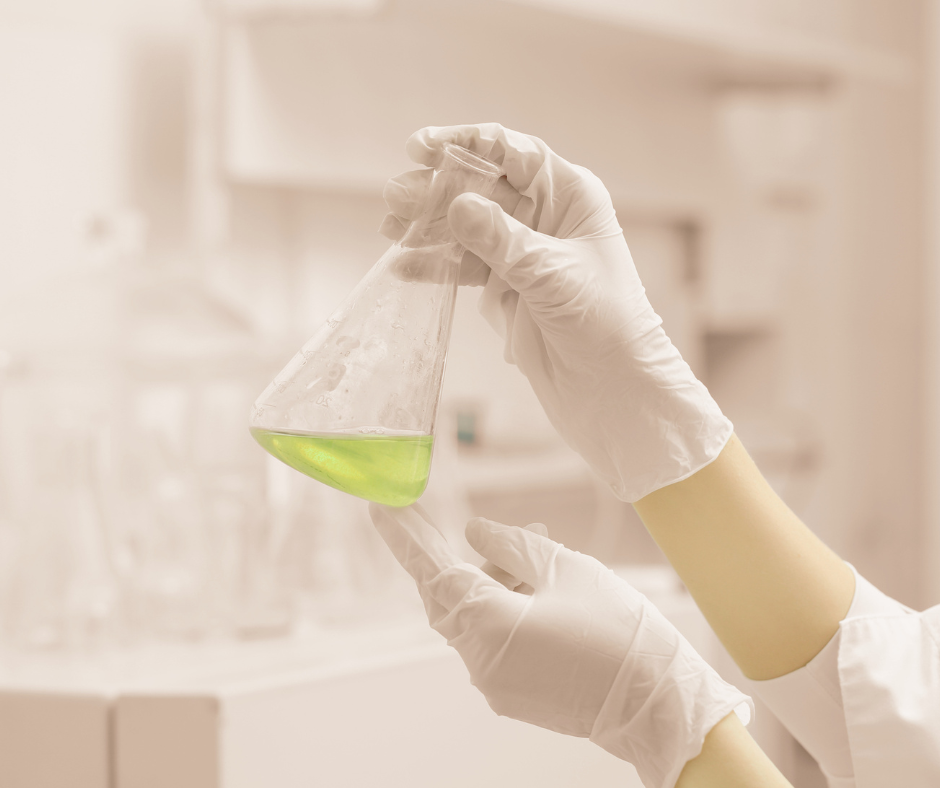Are you eating foods that are banned in other countries? This is a question many of us probably have never thought about before. I know I never did until I learned about it in school. You’ve probably heard that you should avoid artificial colors and preservatives, right? In today’s age, those things are mostly common knowledge. Here in the US, avoiding those things seem like a simple food choice such as choosing a salad over a doughnut. But, other countries have deemed these additives more than just “unhealthy”, they instead identity them as hazardous.
The current food regulations and food safety laws are quite different when comparing the United States with the European Union. Whereas the EU takes a proactive approach, the United States takes a reactive one. “In the United States, food additives are innocent until proven guilty, while in Europe, only those additives proven not to be harmful are approved for use,” (Organic Germinal, 2018). In fact, our food inspection systems are extremely different. Here in the US, we have a centralized federal system for food inspection and examination that is split into multiple governing bodies. The FDA is accountable for the most of the food products in the country, and the Food Safety Inspection Services of the USDA (US Department of Agriculture) is accountable for poultry, meat, and eggs. While America’s food is federally regulated, Europe’s food is not. All food in the 27 countries that make up the European Union is regulated by the European Food Safety Authority. The EFSA has much stricter food regulations that we do here in the US. because of these strict regulations, common companies like like Kraft-Heinz, Kellogg’s, PepsiCo, Quaker, etc. sell safer, better products oversees while making inferior versions to sell to Americans (Food Babe, 2019).
Vani Hari, or “Food Babe”, is a food activist that compared ingredients of the same brand name food items in Europe and in the US. If you want to learn more I highly recommend you check out her website, but for now, here is a few of the differences she discovered.


Does that make anyone else mad? I definitely don’t want these corporations to feed me potentially harmful ingredients. If you feel similar here’s what you can do- familiarize yourself with the additives that are banned in Europe and avoid them. To make this easier, we’ve compiled a list for you below.
Additives banned by The European Union:
- Potassium bromate – An oxidizing agent that gives dough its white color, and a known nervous system disruptor.
- BHA & BHT- A preservative that when studied, showed long-term exposure to high doses is toxic in mice and rats, causing liver, thyroid and kidney problems and affecting lung function and blood coagulation.
- Brominated vegetable oil- Used to keep flavors from separating in soft drinks, also used as a flame retardant in plastics and furniture. It can build up in the body and potentially lead to memory loss, skin, and nerve problems.
- Ractopamine- A feed additive given to animals to promote leanness that’s linked to heart problems in humans.
- Titanium dioxide- An artifical color and known carcinogen.
- Azodicarbonamide- Bleaching agent and common allergen.
- Potassium Iodate- A form of iodine that can interfere with thyroid function.
- Blue 1, Yellow 5 & 6- Artificial colors and known carcinogens.
- Red 40- An artificial color made from petroleum that requires a warning label in Europe. It’s known to cause migraines, jitteriness, and worsen some disorders such as ADHD.
- ADA- A whitening agent and known carcinogen.
- Acesulfame- An artificial sweetener that is hard on the liver and kidneys, as well as a known carcinogen.
- Aspartame- An artificial sweetener that can worsen neurological and behavioral disorders.
- rBST (artificial growth hormone)- A synthetic growth hormone used to increase milk production in cows. Associated with increased risk of breast, colon, and prostate cancer in humans. Because rbGH use results in more cases of mastitis in cows, dairy farmers tend to use more antibiotics to combat the infections, the residues of which also may end up in milk and dairy products. These residues can cause allergic reactions in sensitive individuals and contribute to the growth of antibiotic resistant bacteria.
- Olestra- A cholesterol-free fat substitute that’s known to irritate the digestive system, and hinders the body’s absorption of vitamins A, D, E and K.
- GMOs- Altering DNA in certain crops makes them resistant to herbicides. The most common herbicide used with these GMOs is glyphosate (Roundup), and consumption is linked to cancer. There’s less than 40 total GMOs that are approved by the European Union, while the US has approved hundreds.
- Roxarsone- An arsenic-based drug fed to chickens to increase the pink color of meat.
- Herbicides- We have 374 herbicides we use here in the US, 72 of them are banned in Europe. Almost all of them are linked to cancer when studied in rats.
The best thing we can do is familiarize ourselves with this list, and always read food labels before purchasing processed foods. If you’d like more information or help with your diet please call 717-660-2320 and schedule a health coaching session.
References
Lew, M. (2022, August 16). Food Standards Showdown – USA vs the EU. New World Report. https://www.thenewworldreport.com/food-standards-showdown-usa-vs-the-eu/
Parker Waichman LLP. (2022, January 21). Chemicals and Additives in America Banned in Other Countries. https://www.yourlawyer.com/library/12-chemicals-additives-america-consumes-banned-abroad/
Robbins, O. (2022, June 17). 11 Banned Foods Americans Should Stop Eating. Food Revolution Network. https://foodrevolution.org/blog/banned-ingredients-in-other-countries/
Babe, F. (2019, February 28). Food in America compared to the U.K. (Why is it so different?). Food Babe. https://foodbabe.com/food-in-america-compared-to-the-u-k-why-is-it-so-different/
Wilson, J. (2022, September 13). These Food Ingredients Are Banned In Europe But Allowed In The U.S. HuffPost. https://www.huffpost.com/entry/food-ingredients-banned-europe-united-states-additives_l_63124ed2e4b0fc6bd23b64e7
European Food Safety Authority. (2023, July 1). Food additives. https://www.efsa.europa.eu/en/topics/topic/food-additives
EU Bans Use of Artificial Sweeteners in Dietetic Bakery Products. (2018, February 2). Global Agricultural Information Network. https://apps.fas.usda.gov/newgainapi/api/report/downloadreportbyfilename?filename=EU%20Bans%20Use%20of%20Artificial%20Sweeteners%20in%20Dietetic%20Bakery%20Products_Brussels%20USEU_EU-28_2-5-2018.pdf
European Food Safety Authority. (n.d.). Genetically Modified Organisms. https://www.efsa.europa.eu/en/science/scientific-committee-and-panels/gmo
The Dirty Dozen: BHA and BHT. (2022, April 21). David Suzuki Foundation. https://davidsuzuki.org/living-green/dirty-dozen-bha-bht/
Center for Food Safety | About rbGH | | About rbGH. (n.d.). Center for Food Safety. https://www.centerforfoodsafety.org/issues/1044/rbgh/about-rbgh

